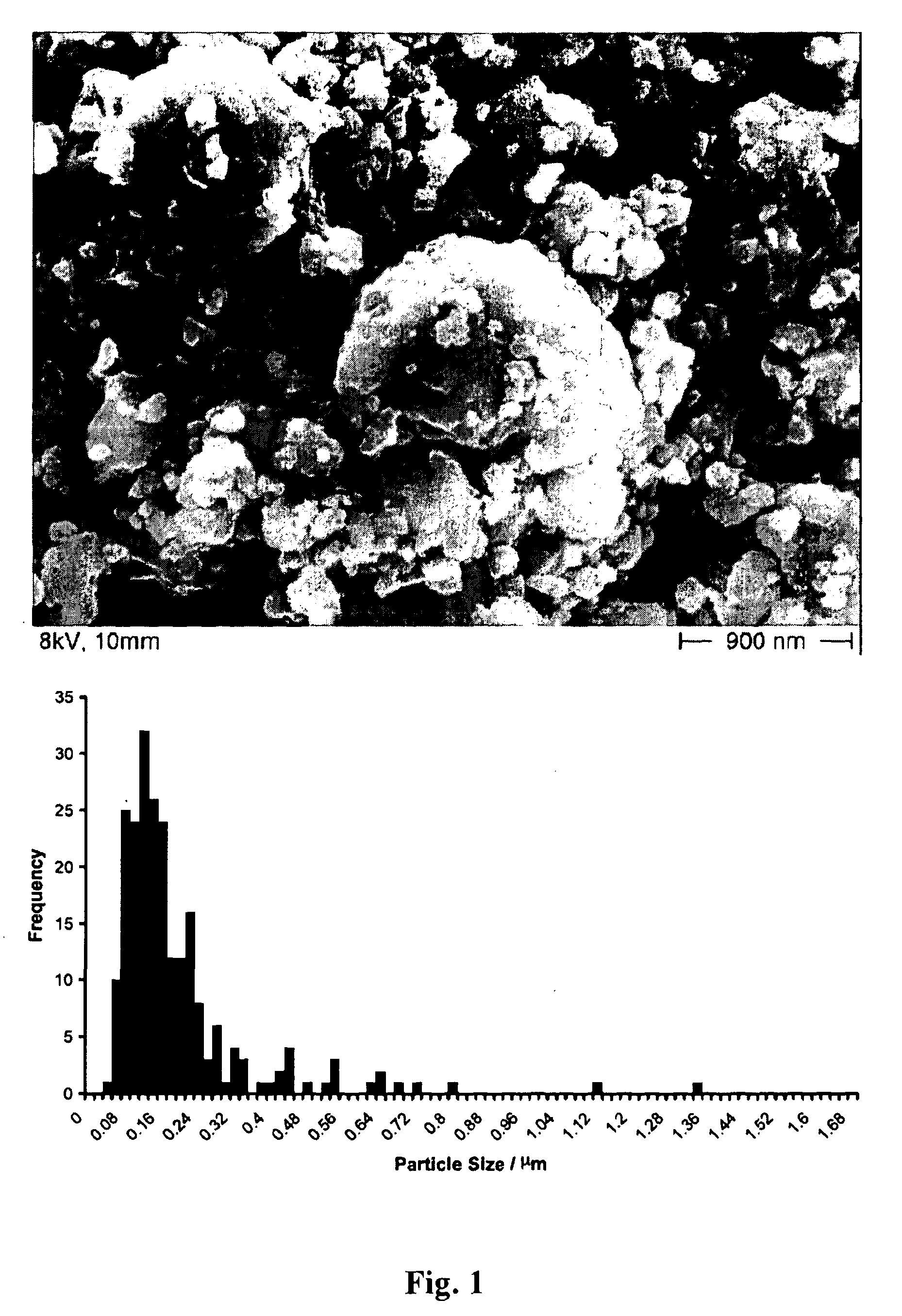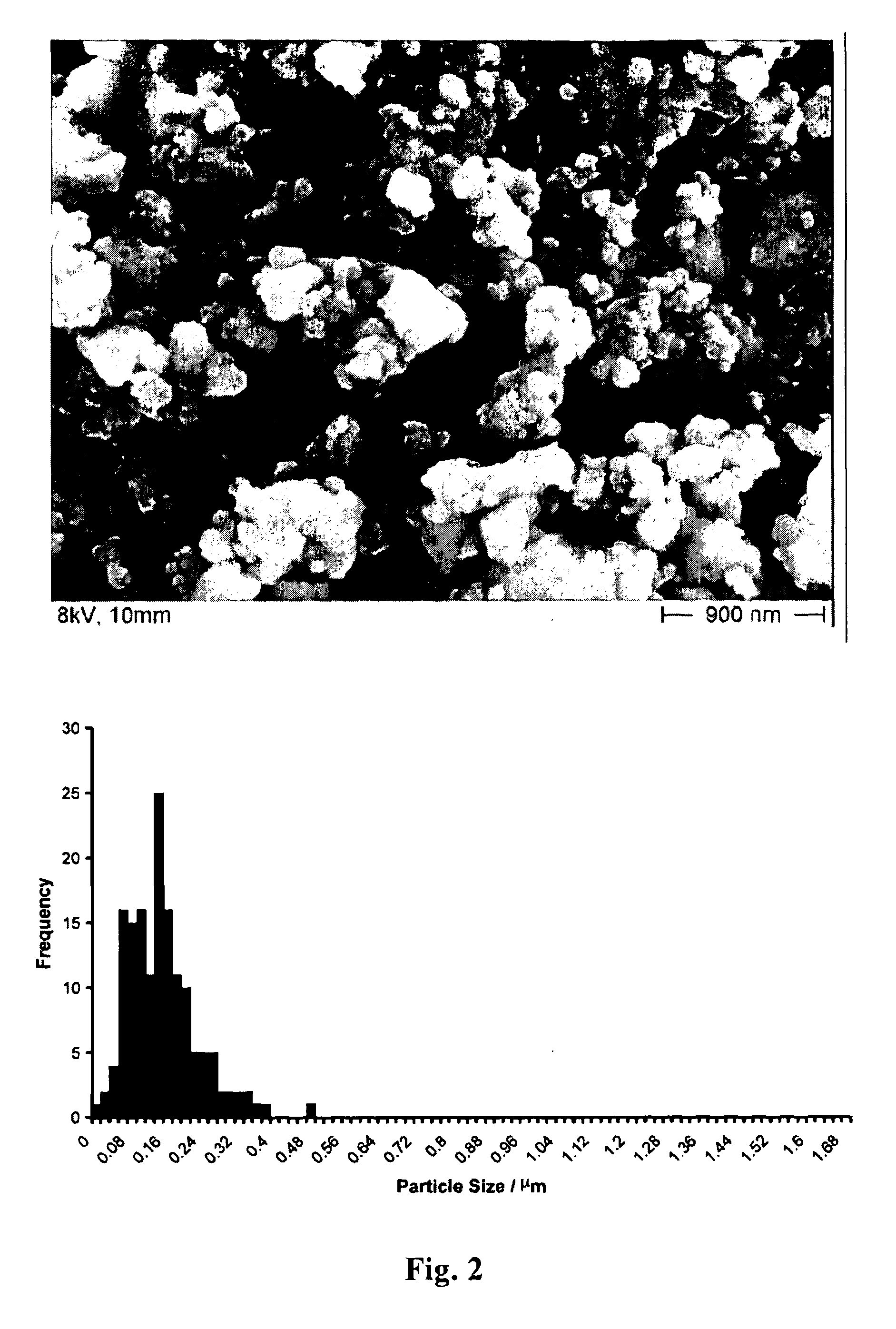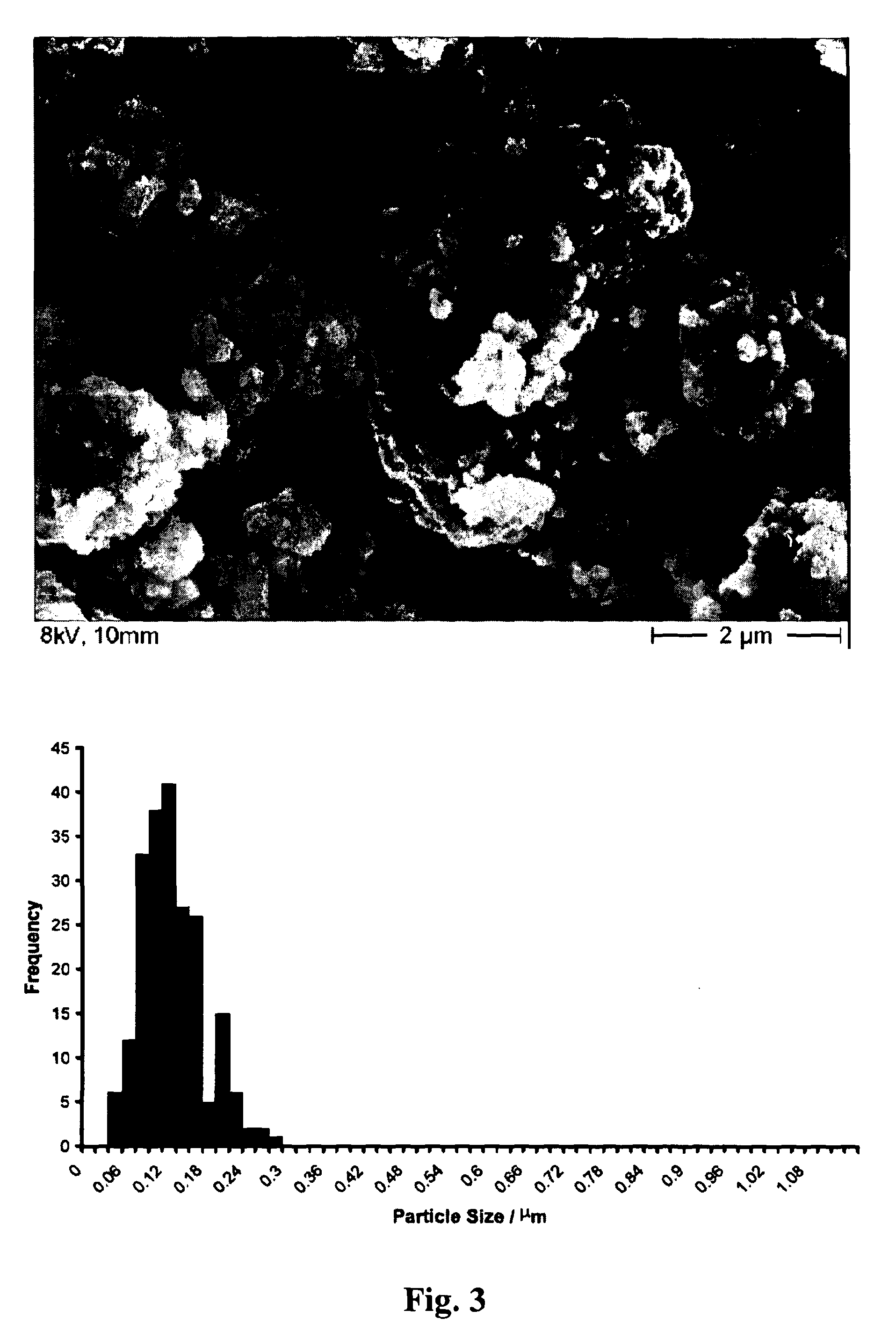Preparation Of Silicon For Fast Generation Of Hydrogen Through Reaction With Water
- Summary
- Abstract
- Description
- Claims
- Application Information
AI Technical Summary
Benefits of technology
Problems solved by technology
Method used
Image
Examples
example 1
Preparation of Nonpassivated Silicon by Dry Milling, and its Reaction With Water to Generate Hydrogen Gas
[0192]This Example describes the preparation of mechanically milled Si, which readily generates hydrogen when contacted with water, even well below 100° C. Hydrogen yields calculated on a hydrogen:silicon weight ratio of 5.13 wt %-9.11wt %, corresponding to specific energies of 7.34 and 13.06 MJ kg−1 respectively, were observed for the Si powders prepared, which were characterised by a range of physical methods. The Example shows that the reaction of Si with pure water, generating SiO2 as the only by-product, is a viable route for the local supply of hydrogen.
[0193]Milling Experiments
[0194]Silicon pieces (99.95%, 2.5 g, 88.9 mmol) were placed in a tempered steel vial containing 5 mm diameter steel balls (41.6 g) corresponding to a silicon: ball ratio of 1:17. The vials were purged with nitrogen (99.9%) using a FRITSCH gassing lid for 30 minutes prior to milling. Samples were mill...
example 2
Preparation of Nonpassivated Silicon by Wet Milling, and its Reaction With Water to Generate Hydrogen Gas
[0211]Silicon pieces were ball milled at speeds from 600 to 1000 rpm for periods between 2 to 30 minutes in the presence of acetonitrile under an inert atmosphere. The hydrolysis of the resulting nanoparticles with water was investigated so as to assess the potential of this route to supply hydrogen to fuel cells. The silicon particles had a microstructure comprising primarily of irregular shaped and sized shards, with spherical agglomerates also observed with increasing milling time. X-ray photoelectron spectroscopy showed that increasing the milling time resulted in a small increase in the oxygen content of the samples, whereas varying the milling speed had little effect. The silicon particles reacted instantaneously with water generating hydrogen, and the hydrolysis continued for a duration of 3-4 hours producing yields between 5.13 wt % and 9.54 wt %, with 2.99 wt % and 9.26 ...
example 3
Preparation of Nonpassivated Silicon by Dry Milling, and its Characterisation by Synchrotron X-Ray Diffraction
[0240]Si produced by the dry milling process as described in Example 1 was characterised by X-ray diffraction to gain a measure of the crystallographic disorder present in the product. Typical X-ray diffraction data for 3 samples of cubic silicon collected on beam line I11 at the Diamond (synchrotron) light source (λ=0.83 Å) are shown in FIG. 20. The plot in FIG. 20 show samples milled at 800 rpm for 0.25 hours (lower line), 0.5 hours (middle line), and 1 hour (upper line). A general increase in the width of the Bragg peaks was observed with increasing milling time, and this is consistent with a decrease in particle size coupled with the creation of crystallographic disorder. An additional peak, not associated with the structure of cubic (Fd-3m) silicon can be observed at ˜14.5° 2-theta. This peak, most clearly seen in the data for the sample milled for 0.25 hrs (under which...
PUM
 Login to View More
Login to View More Abstract
Description
Claims
Application Information
 Login to View More
Login to View More - R&D
- Intellectual Property
- Life Sciences
- Materials
- Tech Scout
- Unparalleled Data Quality
- Higher Quality Content
- 60% Fewer Hallucinations
Browse by: Latest US Patents, China's latest patents, Technical Efficacy Thesaurus, Application Domain, Technology Topic, Popular Technical Reports.
© 2025 PatSnap. All rights reserved.Legal|Privacy policy|Modern Slavery Act Transparency Statement|Sitemap|About US| Contact US: help@patsnap.com



